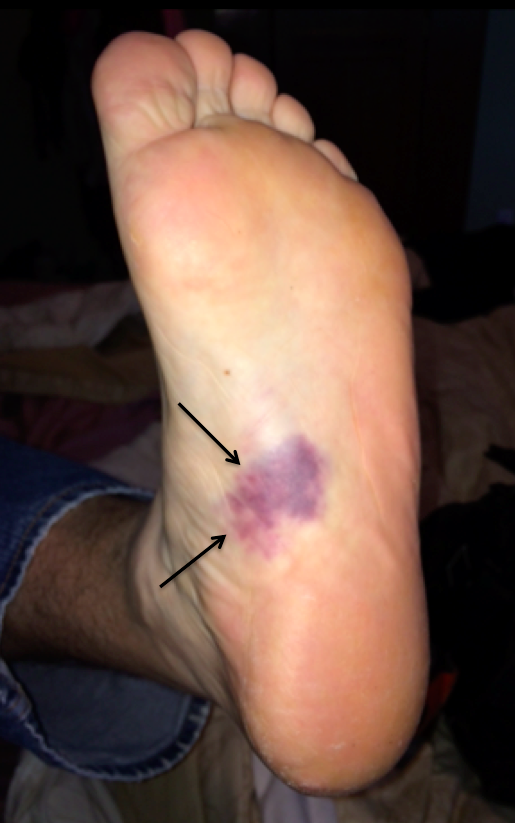Plantar Fascia Rupture
Summary
Plantar fascia rupture is characterized by an acute pain in the arch of the foot, following a dynamic activity. It is a relatively uncommon injury but can occur in patients with chronic plantar fasciitis. It is often associated with long-standing flat feet deformity. Treatment is non-operative with pain control, relative rest, gentle stretching, and a gradual return to activities over a period of weeks to months.
Clinical Presentation
Plantar fascia rupture is an uncommon, but very painful event. Patients will describe a sharp, tearing pain in the sole of their foot, usually during some sort of athletic or dynamic type of activity. It is often associated with a history of flat feet or tight calf muscle and may be associated with a history of plantar fasciitis. Occasionally, there are some arch strain symptoms in this area prior to the rupture. After a plantar fascia rupture, patients will complain of localized pain and associated swelling. It will be very difficult to walk on the foot, and there will be a marked associated limp that will gradually settle over time.
Physical Exam
Physical exam will reveal acute tenderness in the sole of the foot, associated with the area of the rupture. There is usually some initial swelling. There may be significant bruising, which appears a few days after the rupture. In addition to identifying a history of flat feet, there may also be a noticeable tightness in the calf muscle (equinus contracture), which has been known to predispose to plantar fascia rupture.
Figure 1: Bruising in the sole of the foot after plantar fascia rupture

Imaging Studies
X-rays taken of the foot will generally be normal. If an MRI is ordered, it will identify the rupture of the plantar fascia, which can be partial or complete. There will be associated edema and evidence of increased blood flow to this area. Of note, the rupture is often in the arch of the foot as opposed to the area that is injured with plantar fasciitis, which is essentially where the plantar fascia attaches (inserts) into the heel bone (calcaneus).
Treatment
Treatment is non-operative. The injury is usually quite painful and therefore initial treatment is generally oriented towards pain control with ice, crutches, and limited activity. As the symptoms begin to settle, often 4-10 days after the original injury, it may be possible to do more weight bearing, provided that stiff soled comfort shoes or a protective walker boot is used. At this point, gentle plantar stretching can be done.
Non-steroidal anti-inflammatory medication(s) or pain medication can help with the symptoms. Return to reasonably normal standing or walking can occur relatively quickly in a few weeks. However, return to high level sports requiring sudden change of direction or explosive power through the plantar fascia region can be quite prolonged, in the order months. There is usually no surgical indication for treatment of a plantar fascia rupture.
Edited by Stephen Pinney MD, July 7th 2025